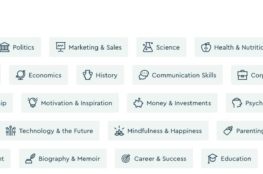Welcome to the realm of ‘Antifragile: Things That Gain from Disorder,’ an insightful exploration penned by scholar, statistician, and risk analyst Nassim Nicholas Taleb. In this ground-breaking work, Taleb doesn’t merely take us through the familiar landscapes of resilience or robustness, but he dares us to voyage further, into the terra incognita of antifragility. This concept, the antithesis of fragility, posits that certain systems not only endure stress, chaos, and shocks but indeed thrive upon them. It’s this audacious perspective that makes ‘Antifragile’ a transformative read for anyone looking to reframe their perception of adversity and uncertainty.

Why, you might ask, should you care about this seemingly esoteric concept of antifragility? The answer is both profound and pragmatic. In a world often obsessed with creating a cocoon of stability and predictability, Taleb compels us to question this paradigm. Is it genuinely beneficial to avoid stressors and seek continuous comfort, or are we unwittingly making ourselves more fragile? By understanding and applying the principles of antifragility, we can better navigate life’s inevitable turbulence and turn adversity into a catalyst for growth, both personally and professionally. Personally, this is one of my all-time-favorite books and I’ve read and listened through it at least 4 times!
In the prelude to his seminal work, Taleb eloquently sets the stage for antifragility, writing, “Some things benefit from shocks; they thrive and grow when exposed to volatility, randomness, disorder, and stressors and love adventure, risk, and uncertainty.” It is this fundamental thesis that Taleb expounds upon throughout ‘Antifragile.’ The book is an invitation to view chaos and disorder not as menacing specters to be feared, but as forces that can spur innovation, stimulate growth, and foster resilience. It’s this radical shift in perspective that has the potential to revolutionize not just how we respond to adversity, but how we approach personal growth, career progression, and even the way we make financial decisions.
Key Concepts
Antifragility Defined
Antifragility is the cornerstone concept of Taleb’s work. It’s more than mere resilience—the capacity to bounce back from adversity—or robustness, the quality of withstanding shocks. Antifragility goes a step further. An antifragile system improves because of shocks, stressors, and unpredictability. It thrives in the face of chaos and disorder. Taleb puts it succinctly in his book, “Antifragility is beyond resilience or robustness. The resilient resists shocks and stays the same; the antifragile gets better.”
The Triad: Fragile, Robust, Antifragile
To help us understand the concept of antifragility better, Taleb introduces a triad: the fragile, the robust, and the antifragile. A fragile system is susceptible to shocks and will likely break when faced with stressors. A robust system can withstand shocks—it endures but remains unchanged. An antifragile system, however, thrives on shocks. The more volatility it faces, the better it becomes. “Wind extinguishes a candle and energizes fire,” Taleb illustrates, “You want to be the fire and wish for the wind.”
Stressors as Catalysts for Growth
One of the revolutionary ideas Taleb presents in ‘Antifragile’ is the notion that stressors—events or conditions that cause stress—can be catalysts for growth and improvement. Like muscles that grow stronger under the stress of exercise, systems and individuals can become more capable, more adaptable, and more resilient when exposed to volatility and adversity. Taleb writes, “Stressors are not always harmful; they can be beneficial, as they often stimulate growth, improvement, and advancement.”
The Barbell Strategy
The Barbell Strategy is another essential concept in ‘Antifragile.’ It suggests balancing between extreme caution and extreme risk-taking, with little in the middle. It’s a bit like having a barbell—you have weights on both ends, but nothing in the center. This strategy allows for potential big wins while protecting against catastrophic losses. In the context of antifragility, the Barbell Strategy is about taking calculated risks to gain from volatility while maintaining a safety net.
The Role of Variability and Randomness
‘Antifragile’ encourages us to embrace variability and randomness. In a world that often values routine and predictability, Taleb argues that these attributes can make us fragile. Variability and randomness, on the other hand, help build resilience and antifragility. By introducing change and unpredictability into our lives—through varied learning, diverse experiences, or different exercise routines—we can stimulate growth and promote antifragility.
Decentralization vs. Centralization
In ‘Antifragile,’ Taleb presents a compelling argument for decentralization over centralization. He suggests that large, centralized systems are more susceptible to shocks and can be quite fragile. On the other hand, decentralized systems—characterized by more distributed control or diversity—can be more resilient and adaptable. As Taleb explains, “Decentralization reduces large structural asymmetries.” It’s about balancing autonomy and cohesion to build antifragile systems.
Key Takeaways and Action Steps
‘Antifragile’ is more than a book; it’s a philosophy, a way of approaching life and its inherent unpredictability. I find myself applying these principles and strategies in my life on a daily basis. Here are key takeaways and actionable steps inspired by this philosophy:
- Redefine Your Relationship with Disorder: Understand that chaos, uncertainty, and stressors are not inherently harmful—they can be catalysts for growth and improvement.
- Embrace Variability: Break the monotony of routine. Diversify your experiences, be it in your learning, your exercise regimen, or your investments.
- Adopt the Barbell Strategy: Be extremely cautious in some areas while taking significant risks in others. This approach can protect you from significant losses while keeping the door open for substantial gains.
- Decentralize: Wherever possible, favor decentralization over centralization. Whether it’s in your personal life, your investments, or your business, decentralization can provide greater flexibility and resilience.
- Adopt an Antifragile Mindset: Instead of seeking comfort and predictability, train yourself to seek out challenges and embrace
The Bottom Line:
Taleb provides a fresh perspective on navigating life’s uncertainties and leveraging them for growth and resilience. He invites us to redefine our relationship with chaos, variability, and stress, moving away from fearing these elements to harnessing them as catalysts for development. It’s a paradigm shift that carries profound implications for personal growth, professional success, and even financial decisions. Indeed, as we learn to embody antifragility, we step into a life of not merely surviving the storms of life, but thriving within them.




